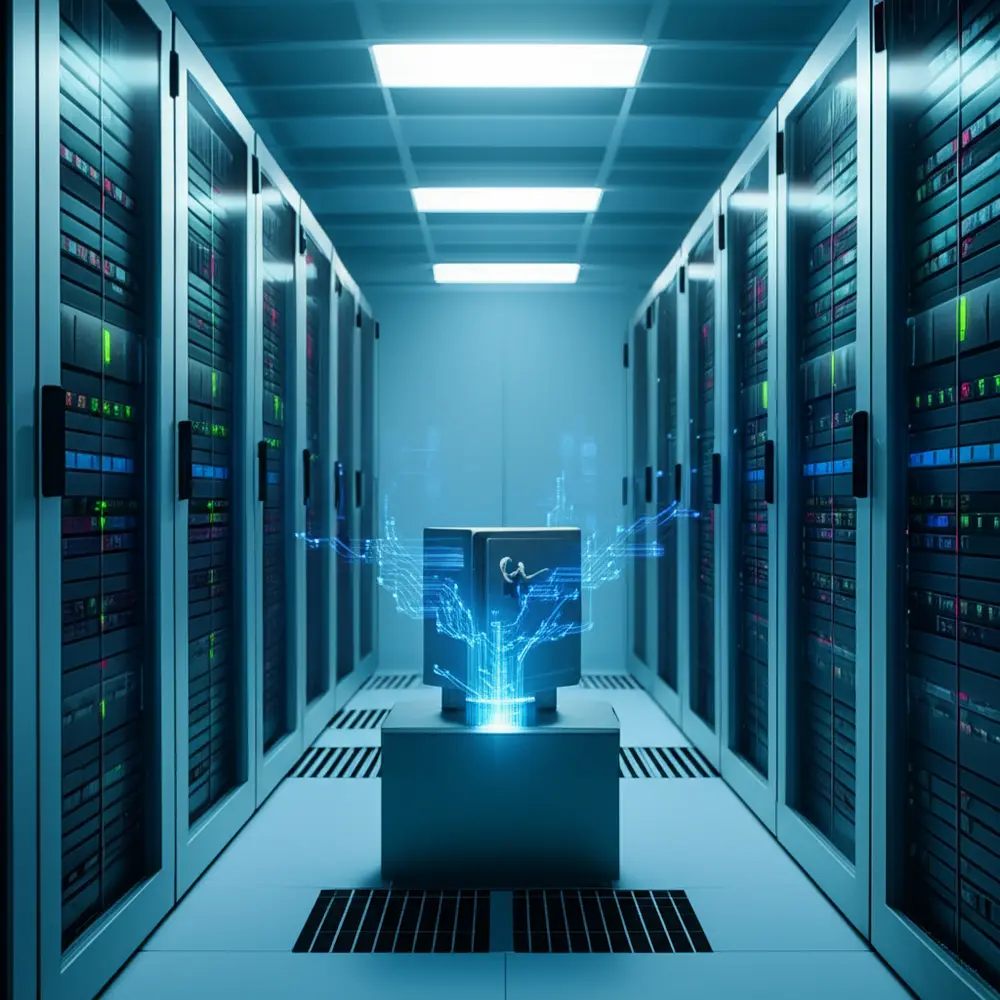The global landscape of Customer Success is constantly shifting, presenting unique challenges for professionals. You navigate complex client expectations and strive to maintain engagement. This often means balancing proactive support with reactive problem-solving, all while aiming for consistent growth.
You face the critical pain points of client churn, inefficient communication across diverse teams, and the struggle to scale personalized support. Retention targets loom large. Finding tools that truly empower your team to deliver exceptional value remains a constant quest.
Success in this dynamic environment demands more than just effort; it requires strategic adaptation and the savvy integration of innovative solutions. You must evolve your approach, leveraging cutting-edge strategies and technology to not only meet, but exceed, your customer’s needs and drive tangible business outcomes.
Mastering Foundational Customer Success Skills in a Dynamic Environment
Your journey in Customer Success begins with understanding fundamental principles and cultivating crucial skills. You learn to listen actively, delving beyond surface-level requests to uncover deeper client needs. This empathetic approach forms the bedrock of every successful client relationship.
You embrace the challenge of onboarding new clients, transforming complex solutions into accessible insights. This demands clear, patient communication. It is a critical skill for establishing trust and ensuring rapid client adoption, setting the stage for long-term satisfaction.
Building resilience and adaptability becomes second nature as you navigate diverse customer bases. Each client presents unique expectations and cultural nuances. You hone your cross-cultural communication, a vital asset for any global Customer Success professional, ensuring no interaction falters.
Problem-solving is a daily exercise. From intricate technical glitches to strategic roadblocks, you proactively identify issues and commit to finding effective solutions. This fosters a mindset of anticipation, allowing you to address potential client concerns before they escalate, enhancing loyalty.
Furthermore, you master the art of internal collaboration. Working seamlessly with product, sales, and engineering teams is essential. You understand departmental synergies, enabling you to deliver holistic customer value and advocate effectively for your clients’ evolving requirements.
Case Study: TechSolutions Hub Optimizes Onboarding
In Hyderabad, TechSolutions Hub faced significant onboarding friction and a 12% client churn rate within the first three months. Their CS team struggled with inconsistent new client training. This led to prolonged time-to-value for customers and overloaded support channels.
You implemented a structured, two-phase onboarding program, including personalized video tutorials and dedicated CSM check-ins. This standardized approach significantly improved clarity. The team used a new CRM to track client progress, ensuring no one fell through the cracks.
Within six months, TechSolutions Hub saw a 25% reduction in early-stage churn, a 15% increase in product feature adoption, and a 10% decrease in initial support tickets. Clients achieved their first key milestone 20% faster, directly impacting their perceived value.
Reactive Support vs. Proactive Advocacy: Shifting Your Mindset
You often find yourself caught in the reactive cycle, addressing immediate client issues as they arise. This approach, while necessary, can prevent strategic growth. It prioritizes fixing problems over preventing them, impacting your ability to scale effectively.
Shifting to proactive advocacy means anticipating client needs and challenges before they materialize. You analyze usage data, engage in regular check-ins, and identify potential risks or opportunities. This empowers clients and builds stronger, more enduring partnerships.
For example, a reactive model sees you responding to a feature request. A proactive model involves analyzing market trends and user feedback, then recommending a relevant new feature to your client before they even think to ask, demonstrating foresight and expertise.
This strategic shift not only reduces client frustration but also elevates your role from a problem-solver to a trusted advisor. You transform your team’s focus, moving from mere support to actively driving client success and fostering long-term value.
Strategizing for Global Expansion: Your Next Career Leap
Deciding to expand your Customer Success journey across continents, perhaps from Hyderabad to Dallas, is a profound strategic move. You prepare for a new market, adapting your existing expertise. This represents more than just a change of scenery; it’s a strategic leap for accelerated professional growth.
You meticulously research the Dallas market, understanding its unique business environment and cultural nuances. This includes analyzing industry trends, competitor landscapes, and the specific needs of potential clients. Thorough preparation is paramount for successful market entry.
Navigating visa processes and establishing new professional networks can be daunting. However, you view these hurdles as opportunities to build resilience. Each challenge overcome contributes significantly to your personal and professional growth, enriching your entire Customer Success journey.
Your background from a global hub like Hyderabad provides a unique, invaluable perspective. Skills honed in diverse contexts, such as adaptability and cross-cultural communication, are highly valued in new markets. You leverage this global exposure, positioning yourself as a versatile asset.
You must also prioritize data security and compliance with international regulations, such as the General Data Protection Regulation (LGPD). Understanding how LGPD applies to client data, even outside the EU, is critical for building trust and avoiding costly legal repercussions in a globalized market.
Case Study: GlobalConnect Logistics Expands to Dallas
GlobalConnect Logistics aimed to expand its operations from Southeast Asia into the US market, specifically Dallas. They projected a 30% revenue increase but feared a potential 18% churn rate due to cultural misalignment and unfamiliar client expectations.
You initiated comprehensive cultural sensitivity training for your Dallas-based Customer Success team. You also adapted communication protocols and introduced flexible engagement models, respecting local business practices. This ensured smoother client interactions.
As a result, GlobalConnect Logistics achieved its 30% revenue growth target and maintained a churn rate below 8% in its first year in Dallas. They reported a 22% increase in client satisfaction scores, attributing success to a culturally attuned CS strategy.
Localized vs. Standardized CS Playbooks: Finding Your Balance
You face the dilemma of maintaining a consistent brand experience while addressing diverse local needs. A fully standardized CS playbook ensures uniformity, but risks alienating clients in culturally distinct markets. It can feel impersonal and irrelevant to local challenges.
Conversely, a purely localized approach, though highly tailored, can lead to inconsistencies in service quality and brand messaging across regions. This fragmentation complicates internal training and makes scaling your Customer Success operations difficult and inefficient.
The optimal strategy involves a “glocal” approach: a standardized core framework with localized flexibility. You define universal CS principles, metrics, and essential tools, while empowering local teams to adapt communication styles, support hours, and specific client incentives.
For instance, standardizing your CRM and reporting tools ensures data consistency. However, you localize onboarding content and success metrics to reflect regional market priorities, achieving both efficiency and client relevance, driving better outcomes.
Data Security and LGPD Compliance in a Global Context
You operate in a world where data is paramount, and its protection is non-negotiable. Ensuring robust data security means implementing encryption, access controls, and regular audits. You safeguard sensitive client information against breaches, building unwavering trust.
The LGPD, Brazil’s General Data Protection Law, impacts any company handling data of individuals in Brazil, regardless of company location. You must understand its principles: purpose, adequacy, necessity, transparency, and data subject rights. Non-compliance carries severe fines, up to 2% of your company’s revenue or R$50 million per infraction.
This means you need clear data processing agreements, explicit consent mechanisms, and transparent privacy policies. You designate a Data Protection Officer (DPO) and conduct Data Protection Impact Assessments (DPIAs). Compliance isn’t just a legal requirement; it’s a cornerstone of client trust and business integrity.
Driving Advanced Customer Engagement with Innovative Tools
To scale your impact, you leverage innovative tools that streamline communication and enhance engagement. Managing multiple client accounts across different time zones demands efficiency. You seek solutions that provide unified communication and consistent messaging.
You recognize the increasing importance of instant messaging platforms, especially WhatsApp, for direct client interaction. However, managing individual WhatsApp accounts for a team creates silos. You need a solution that centralizes these conversations for collective access.
This is where multi-user WhatsApp solutions become indispensable. They allow your entire Customer Success team to access and respond to client messages from a single, shared inbox. You ensure every client query receives a timely, coordinated response, improving satisfaction dramatically.
By integrating such tools, you free up valuable time previously spent on fragmented communications. This allows you to focus on strategic relationship building, proactive check-ins, and identifying upsell opportunities, directly impacting your bottom line and client retention.
Moreover, the data generated from these interactions provides invaluable insights. You analyze communication patterns, common client issues, and response times. This data-driven approach empowers you to continually refine your strategies and optimize your Customer Success journey.
Case Study: Synergy Marketing Group Streamlines Global Support
Synergy Marketing Group, based in New York, struggled with fragmented client communication across its global teams in various languages. Their client response times were inconsistent, leading to a 10% decline in satisfaction scores and an 8% increase in client escalations over six months.
You implemented Evolvy’s Multi-User WhatsApp solution, centralizing all client communications. Teams in different regions could now collaborate on responses, ensuring consistent messaging and faster resolution. You assigned specific agents to priority clients through the platform.
Within three months, Synergy Marketing Group achieved a 20% reduction in average response time and a 15% increase in customer satisfaction. Escalations dropped by 12%, directly saving an estimated $5,000 monthly in resolved dispute costs and strengthening client relationships significantly.
AI Chatbots vs. Multi-User WhatsApp for Client Communication: A Strategic Choice
You consider various tools for enhancing client communication. AI chatbots offer instant, automated responses to frequently asked questions, providing 24/7 support. They efficiently handle high volumes of simple queries, freeing up human agents for complex issues.
However, chatbots often lack the nuanced understanding and empathy required for complex client challenges. They struggle with ambiguous language and personalized problem-solving. Over-reliance can lead to impersonal interactions and client frustration, particularly for high-value accounts.
Multi-User WhatsApp, on the other hand, provides the human touch at scale. It offers real-time, personalized conversations through a familiar channel. Your team collaboratively manages inquiries, ensuring consistency and immediate context for ongoing conversations. This builds deeper trust.
The strategic choice lies in integration. You can deploy AI chatbots for initial screening and basic FAQs, then seamlessly escalate to your Multi-User WhatsApp team for personalized, expert human interaction. This hybrid approach optimizes both efficiency and customer satisfaction.
Step-by-Step to Optimize Your Communication Workflow with Multi-User WhatsApp
- Assess Current Bottlenecks: You identify where client communication slows down or becomes inconsistent. Are individual agents overwhelmed? Do teams lack visibility into ongoing conversations? Pinpoint these critical pain points.
- Define Team Roles & Permissions: You decide who accesses the Multi-User WhatsApp platform and what their roles are. Designate administrators, team leads, and agents, ensuring appropriate permission levels for data security and operational flow.
- Integrate with Existing Systems: You connect your Multi-User WhatsApp solution with your CRM. This ensures client data and conversation history are centralized, providing agents with full context for every interaction without switching platforms.
- Develop Communication Guidelines: You establish clear protocols for response times, tone of voice, and escalation procedures. Create template responses for common queries, ensuring brand consistency and efficiency across your entire team.
- Train Your Team: You conduct thorough training sessions on using the platform’s features, including assigning chats, collaborative responses, and tracking performance. Emphasize best practices for maintaining high-quality client interactions.
- Monitor Performance & Iterate: You regularly review key metrics such as response times, resolution rates, and client satisfaction scores. Use this data to identify areas for improvement, continuously refining your workflow and maximizing efficiency.
For businesses looking to optimize their communication for multiple users, exploring options like Evolvy’s Multi-User WhatsApp solution can provide significant advantages in coordination and efficiency.
Future-Proofing Your Customer Success Career: Continuous Evolution and Impact
Your Customer Success journey is a continuous narrative of learning, adapting, and achieving. You embrace continuous learning as a cornerstone, understanding that the landscape evolves rapidly. Staying curious and constantly upskilling is vital; it fuels your professional growth.
You actively seek out mentors who can guide your path, offering invaluable experience and wisdom. A good mentor provides shortcuts and helps you refine your career trajectory, avoiding common pitfalls. These relationships are critical for sustained professional development.
Building a robust professional network is indispensable. You connect with peers, industry leaders, and potential collaborators. These relationships provide support, insights, and opportunities for professional growth, acting as a powerful asset throughout your entire career path.
You make data-driven decisions to optimize your Customer Success journey. You analyze client engagement, churn indicators, and product usage patterns. This analytical approach empowers you to implement targeted strategies, ensuring measurable professional growth for your clients and for yourself.
Ultimately, your career path in Customer Success is unique. While shared experiences provide frameworks, you tailor your journey to your strengths and aspirations. Embrace every challenge as an opportunity for professional growth, shaping a truly impactful and inspiring career story.
Market Data: The Financial Impact of Customer Success
You understand that Customer Success isn’t just about satisfaction; it directly impacts revenue. Studies show that a 5% increase in customer retention can boost profits by 25% to 95%. This highlights the immense financial leverage of your role.
The cost of acquiring a new customer is, on average, five times higher than retaining an existing one. This means your efforts directly reduce acquisition costs and improve profitability. You prove your value by minimizing churn and fostering loyalty.
For example, if your company’s Average Revenue Per User (ARPU) is $100 per month and your current churn rate is 5%, retaining just 10 more customers per month translates to an additional $1,000 in monthly recurring revenue. Over a year, this is $12,000 directly attributable to your retention efforts.
Companies with strong Customer Success practices often see a 15-20% higher Customer Lifetime Value (CLTV). Your strategic engagements extend client relationships, leading to increased upsells, cross-sells, and invaluable advocacy, driving sustainable long-term growth for your organization.
Personal Branding vs. Team Recognition: Balancing Individual and Collective Success
You recognize the importance of building your personal brand within the Customer Success community. Showcasing your expertise through industry contributions, thought leadership, and networking elevates your individual profile. This opens doors to new opportunities and accelerates your career.
However, your success is often intertwined with the achievements of your team. Prioritizing team recognition fosters a collaborative environment, boosts morale, and ensures collective ownership of client outcomes. You celebrate shared victories, strengthening team cohesion and loyalty.
The balance lies in strategic integration. You can champion your team’s successes by highlighting their contributions in your personal narratives. Attribute significant achievements to collective effort, demonstrating your leadership and ability to empower others.
Conversely, your individual expertise enhances the team’s overall authority and trustworthiness. By sharing your insights, you elevate the collective knowledge base. You blend individual excellence with team collaboration, achieving synergistic results that drive both personal and organizational growth.






